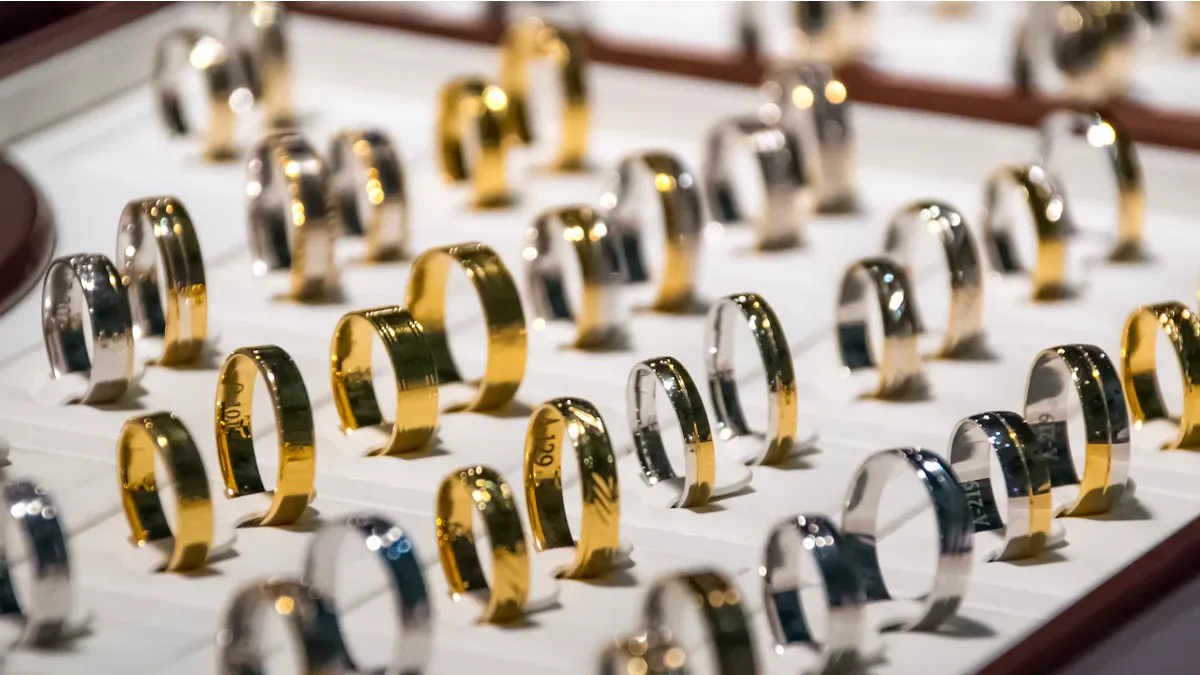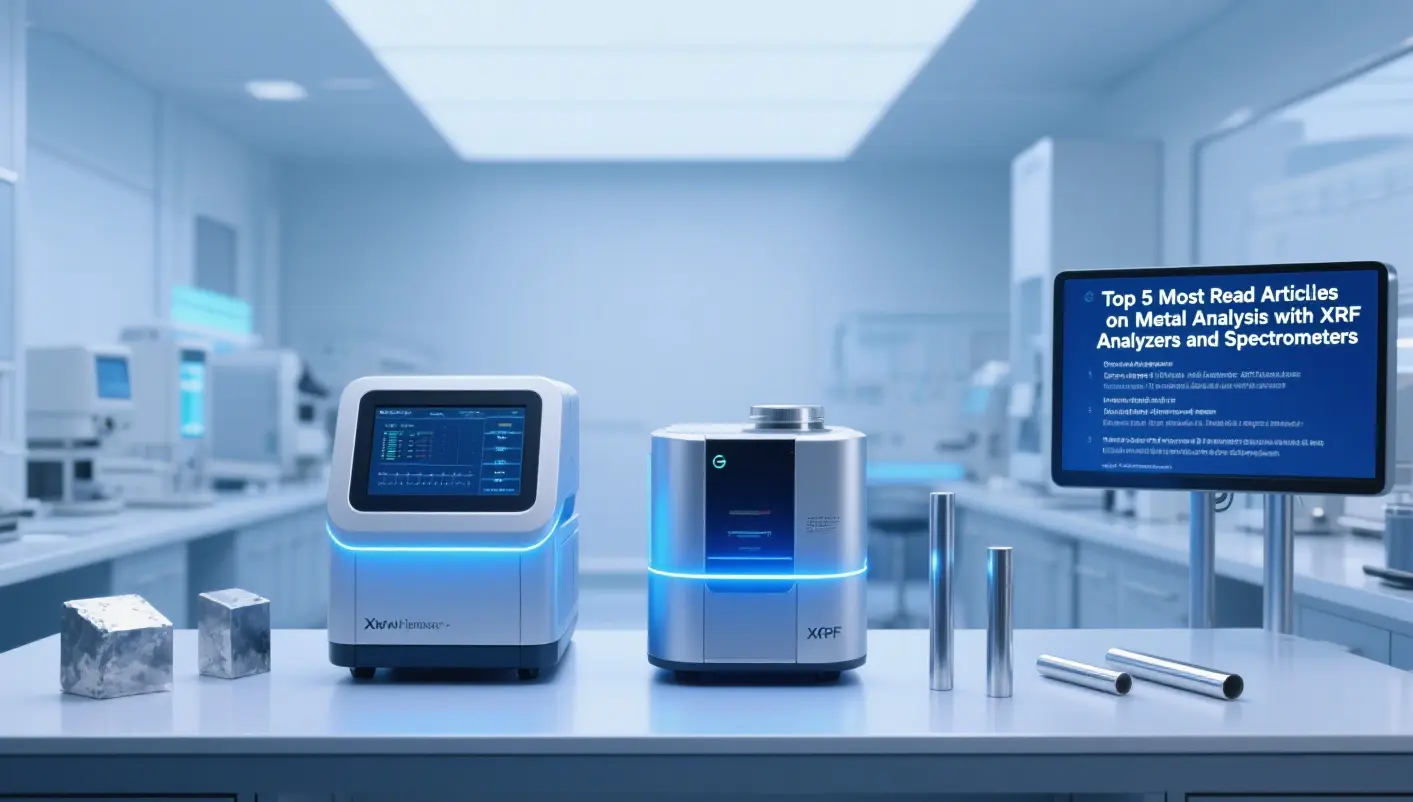Wie lesen Sie die Ergebnisse eines XRF -Analysators??
When you read an RFA-Analysator’s results, the key is to look at the element symbols and the percentages shown on the screen. Each element detected in the sample is listed by its chemical symbol—such as Au for Gold or Ag for silver—along with the proportion of that element in the material. Zum Beispiel, a result of “Au 91.7%” means the item is 22K gold, while “Ag 92.5%” indicates sterling silver. These values tell you exactly what metals are present and in what amounts, making it possible to confirm purity, spot fakes, or verify alloy compositions.

ICHn the following sections we’ll explain how to make sense of XRF readings, avoid common mistakes, and choose the right analyzer for your needs.
Breaking Down the Displayed Results
Most XRF analyzers present data in a table format. Here’s what you typically see:
- Element Symbols – A list of elements detected in the sample, such as Au, Ag, Cu, PD, Pt, or Rh.
- Percentage Composition – The relative proportion of each element, often shown in weight percent (wt%).
- Nachweisgrenzen – Some advanced devices will also show whether elements below a certain percentage are detectable.
- Graphical Spectrum – In many analyzers, a spectrum shows peaks at different energies corresponding to each element. While professionals may use this for deeper analysis, the percentage breakdown is usually enough for everyday applications.
Zum Beispiel:
- A gold bracelet result might read Au 75.0%, Cu 12.5%, Ag 12.5%, meaning it is 18K gold alloyed with copper and silver.
- A silver pendant could read Ag 92.5%, Cu 7.5%, confirming it is standard sterling silver.
The goal is not to memorize the spectrum but to focus on the percentages, since these tell you directly the purity and alloy composition.
How to Verify Purity from XRF Readings
To interpret results correctly, you should match the displayed percentages with known standards:
- 24K Gold – 99.9% Au or higher
- 22K Gold – ~91.7% Au
- 18K Gold – 75.0% Au
- 14K Gold – 58.3% Au
- Sterling Silver – 92.5% Ag
- Platinum Jewelry Standard – ~95% Pt
This reference makes it easy to compare what the machine shows with industry benchmarks. If the analyzer shows a significantly lower percentage than expected, the piece may be fake, plattiert, or a lower-karat alloy than claimed.
Practical Example: Reading Results in Daily Use
- Jewelry Store Owner: A customer brings in a gold chain marked “18K.” Using an XRF analyzer, the reading shows Au 74.8%, Ag 12.6%, Cu 12.6%. The result confirms the chain is genuine 18K gold.
- Pawnshop Manager: An item is presented as pure silver. The XRF analyzer shows Ag 60%, Cu 40%. This indicates it is silver-plated rather than solid sterling silver, protecting the business from a costly mistake.
- Refiner: Scrap materials are tested. Results show multiple precious and base metals. The analyzer helps determine how much recoverable gold or silver is present before processing.
By understanding these outputs, users can quickly decide whether to buy, refine, or reject a piece.
Why Accuracy and Stability Matter

Not all analyzers deliver the same reliability. Cheap or outdated devices may give fluctuating percentages, especially for small samples or plated items. That’s why advanced features like interference reduction programs, micro-focus X-ray options, and optimized detectors make a significant difference. A trustworthy result means fewer disputes, accurate pricing, and stronger customer confidence.
VRAY Instruments has developed a comprehensive product line to suit different user needs:
- For Jewelry Stores and Pawnshops:
Modelle wie die VR-X3 Und VR-N3 are ideal. They combine built-in computers, intuitive touchscreens, and protective systems to ensure simple, accurate purity testing. These are perfect for daily customer transactions where quick verification is essential.
- For High-End Testing and Refining:
Der VR-T9 offers ±0.001% accuracy, spectrum comparison, and customizable reports. It is designed for high-purity gold testing, making it the right choice for refineries and quality-control laboratories.
- For Portable and On-Site Applications:
Der VR-M5 Und VR-H5 handheld analyzers provide rapid, non-destructive results anywhere—ideal for mobile recycling businesses, Bergbau, und Feldinspektionen. Their lightweight build, strong battery life, and dual-beam or Si-Pin-Detektors make them highly dependable on the go.
- For Laboratories and Professional Analysis:
Der VR-T7 Und VR-S6 deliver advanced element detection with full spectrum capability and high-resolution displays. They suit organizations that need comprehensive data and broad element coverage.
Each model is built with VRAY’s philosophy of Innovation, Professionalismus, und Integrität, ensuring that when you read results on the screen, you can trust the numbers completely.
How XRF Results Build Trust with Customers
Für Unternehmen, displaying analyzer results directly to clients builds transparency. Instead of simply stating a gold chain is 18K, showing the screen with Au 75.0% proves it objectively. Customers are more likely to accept pricing and trust the business when results are visibly backed by science.
Häufig gestellte Fragen
Q1: Do I need technical training to read XRF results?
A1:Not necessarily. Most analyzers display results in a clear percentage format. With basic knowledge of purity standards, anyone can interpret the data.
Q2: Can XRF analyzers detect fake or plated jewelry?
A2:Ja. Since the analyzer measures surface composition, it can often detect plating if multiple tests are performed on different spots. VRAY’s advanced software improves detection accuracy for these cases.
Q3: How reliable are tragbarer RFA-Analysators compared to benchtop models?
A3:Portable analyzers like VRAY’s VR-M5 or VR-H5 are highly accurate for most applications. Jedoch, benchtop models such as the VR-T9 or VR-S6 provide higher precision for laboratory-level analysis.
Q4: What is the smallest sample I can test?
A4:This depends on the model. With optional micro-focus X-ray technology, VRAY’s T-series analyzers can test very small or irregular samples with high accuracy.
Q5: Why should I choose VRAY over other brands?
A5:VRAY combines advanced detection technology, Benutzerfreundliche Schnittstellen, and excellent technical support. Their devices are designed for both professionals and newcomers, ensuring trustworthy results across all scenarios.

WhatsApp
Scannen Sie den QR-Code, um einen WhatsApp-Chat mit uns zu starten.